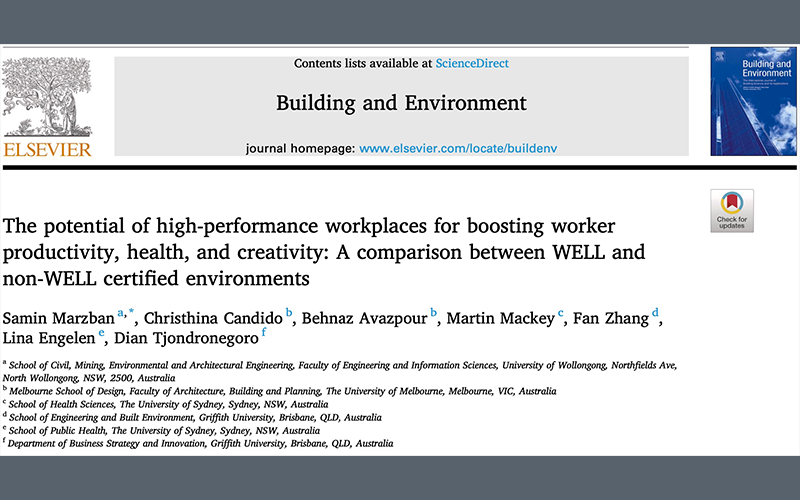High-Performance Workplaces: A Deep Dive into Productivity, Health, and Creativity in WELL vs. Non-WELL Certified Environments
The evolving landscape of workplace design has increasingly emphasized the importance of environments that prioritize the well-being and productivity of their occupants. "The potential of high-performance workplaces for boosting worker productivity, health, and creativity" is a seminal report that delves into this evolution, comparing the attributes and outcomes of WELL-certified workspaces with those that aren't. Spearheaded by experts from various Australian institutions, this research seeks to elucidate the tangible benefits and potential pitfalls of adopting the WELL certification in modern work environments.
Background: The open-plan office design, once hailed for its cost-effectiveness, flexibility, and potential to enhance communication, has become a mainstay in contemporary organizational architecture. Yet, as its popularity soared, so did the realization of the pivotal role Indoor Environmental Quality (IEQ) plays in determining occupant satisfaction. Over time, the architectural and design industry has seen the emergence of certifications like LEED and BREEAM, aimed at championing high-performance standards. However, with the spotlight now firmly on health and well-being, the WELL certification has emerged as a frontrunner. It meticulously addresses seven core concepts crucial to occupant health: air, water, nourishment, light, fitness, comfort, and mind.
Methodology: To demystify the impact of WELL-certified environments, the researchers embarked on an exhaustive study spanning 14 organizations across Australia, New Zealand, and Hong Kong. Each of these organizations operated within open-plan offices but varied in their work methodologies, encompassing traditional setups, Activity-Based Working (ABW), and Agile environments. Among these, 10 had either secured a WELL certification or were on the path to doing so, while the remaining four had no such aspirations. The crux of the data collection hinged on the Post-Occupancy Evaluation survey, administered to 1403 respondents. These participants, predominantly hailing from Generation Y or the Millennial bracket, offered invaluable insights into their perceptions and experiences within their workspaces.
Results: The findings painted a multifaceted picture of the modern workplace. A glaring revelation was the inconsistency between the perceived benefits of WELL-certified spaces and the actual experiences of the occupants. While the certification promises a holistic enhancement of well-being and productivity, the results indicated that the outcomes were more nuanced. Performance claims, especially regarding the enhancement of productivity and well-being, were often ambiguous or contradictory. In instances where these claims were testable, they frequently misaligned with the actual outcomes.
In terms of radiant efficiency and overall satisfaction, significant variations emerged, even among spaces that employed similar design philosophies or technologies. For instance, while the WELL certification emphasizes the importance of natural light for circadian rhythm regulation, the satisfaction levels related to lighting varied widely among respondents.
However, it wasn't all bleak. WELL-certified offices generally showcased higher satisfaction levels, especially concerning the physical configuration of space and organizational aspects. While there were no stark differences in health outcomes between WELL and non-WELL-certified spaces, the former did report fewer complaints related to building-related health issues.
The results underscored an urgent need for more rigorous industry standards, comprehensive education, and accountability in the realm of workplace design and certification. The myriad of ambiguous or contradictory claims highlighted a potential gap in understanding among designers, architects, and organizational leaders about the true essence and implementation of the WELL certification.
In conclusion, the WELL certification, with its emphasis on holistic well-being, has undeniably ushered in a positive shift in workplace design. However, the study serves as a poignant reminder that certification alone isn't a panacea. A deeper understanding, genuine commitment to well-being, and rigorous implementation are crucial to truly harness the benefits of such certifications.
Full Report: https://www.sciencedirect.com/science/article/pii/S0360132323007357
© 2023 Luger Research e.U. – Institute for Innovation & Technology

